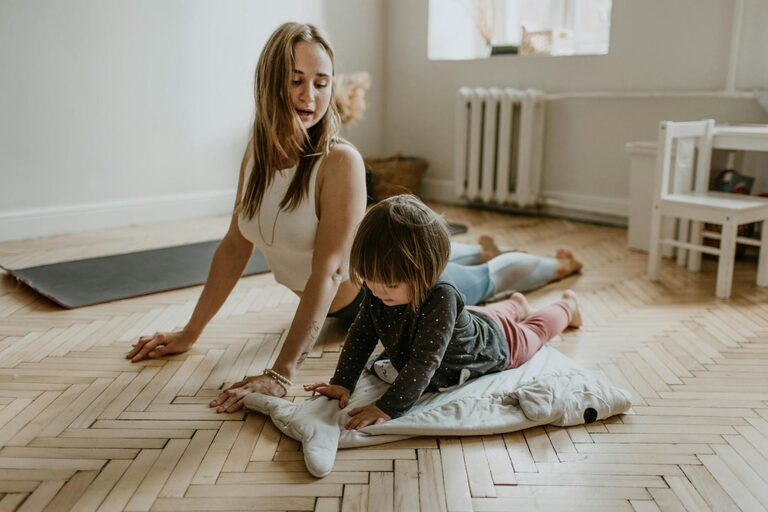
A Beginner’s Guide to Stretching at Home for Better Flexibility
Stretching is a simple yet powerful way to enhance your physical health and feel more comfortable throughout the day. Whether you’re sitting for long hours, recovering from a workout, or just looking to add more movement into your routine, stretching can help.
This beginner’s guide will walk you through the basics of stretching at home, including tips, benefits, and easy exercises you can try today.
Why Stretching Matters
Stretching regularly has several benefits:
– Improves flexibility: Helps your muscles and joints move through their full range.
– Enhances blood flow: Increases circulation to muscles, aiding recovery and reducing soreness.
– Reduces muscle tension: Relaxes tight muscles, which can prevent discomfort.
– Improves posture: Helps correct muscle imbalances caused by prolonged sitting.
– Prevents injury: Prepares your body for physical activities by warming up muscles.
Starting with gentle stretches at home is a convenient way to build these benefits into your daily life.
Getting Started: What You Need
You don’t need any special equipment to begin stretching at home. Here’s a basic checklist:
– Comfortable clothing: Wear something that allows free movement.
– A mat or soft surface: Optional but useful for floor stretches.
– A quiet space: Find a place where you can relax and focus.
– A timer or stopwatch: To keep track of stretch durations.
Remember, the key is consistency and listening to your body. Never push into pain—mild tension is okay, but sharp discomfort is not.
Stretching Guidelines for Beginners
Keep these simple rules in mind:
– Warm up first: Stretching cold muscles can cause injury. Walk around or do light movements for 3-5 minutes before stretching.
– Hold stretches for 15-30 seconds: This allows muscles to lengthen and relax.
– Breathe deeply: Focus on slow, controlled breathing to maximize relaxation.
– Stretch both sides: Balance is important, so do the same stretch on both the left and right sides.
– Stretch regularly: Aim for at least 3-4 times a week for noticeable improvements.
Easy Stretching Exercises to Try at Home
Here are some beginner-friendly stretches focusing on major muscle groups. Perform each stretch slowly and with control.
1. Neck Stretch
– Sit or stand tall.
– Gently tilt your head towards your right shoulder until you feel a stretch on the left side of your neck.
– Hold for 20 seconds, then switch sides.
– Repeat 2-3 times per side.
2. Shoulder Rolls
– Sit or stand with your arms relaxed at your sides.
– Slowly roll your shoulders forward in a circular motion 10 times.
– Reverse the direction and roll your shoulders backward 10 times.
– This helps release tension and improve mobility.
3. Chest Opener
– Clasp your hands behind your back.
– Straighten your arms and gently lift your chest while squeezing your shoulder blades together.
– Hold for 20-30 seconds.
– This stretch counters the effects of slouching and desk work.
4. Seated Hamstring Stretch
– Sit on the floor with one leg extended straight and the other bent, foot against your inner thigh.
– Reach toward the toes of your extended leg without rounding your back.
– Hold for 20-30 seconds, then switch legs.
– Stretching hamstrings can improve your overall posture and reduce lower back strain.
5. Cat-Cow Pose (Spinal Stretch)
– Start on your hands and knees in a tabletop position.
– Inhale as you arch your back (cow pose), lifting your head and tailbone.
– Exhale as you round your spine (cat pose), tucking your chin and tailbone.
– Repeat 8-10 times, moving with your breath.
6. Butterfly Stretch
– Sit with the soles of your feet pressed together and knees dropping outward.
– Hold your feet with your hands and gently press your knees toward the floor.
– Hold for 30 seconds.
– This stretch helps open the hips and inner thighs.
7. Calf Stretch
– Stand facing a wall with your hands touching it.
– Step one foot back, keeping the heel on the ground and the leg straight.
– Lean forward slightly to stretch the calf muscle.
– Hold 20-30 seconds and switch legs.
Tips for Making Stretching a Habit
– Set a routine: Stretch at the same time each day, like after waking up or before bed.
– Combine with other activities: Stretch after workouts or whenever you take breaks during work.
– Track progress: Notice when stretching feels easier or your range of motion improves.
– Stay patient: Flexibility increases gradually, so keep at it even if results are slow.
– Use reminders: Apps or alarms can help you remember to stretch regularly.
When to Be Cautious
If you have specific health concerns, injuries, or chronic pain, consult a healthcare professional before starting a stretching routine. Avoid bouncing or forcing stretches, as this can cause muscle strain.
Final Thoughts
Stretching at home is an accessible and beneficial habit that supports your overall health and well-being. With just a few minutes a day, you can reduce muscle tightness, improve flexibility, and feel more comfortable moving through life.
Start slow, stay consistent, and enjoy the positive changes that come from unpacking those tight muscles. Happy stretching!
